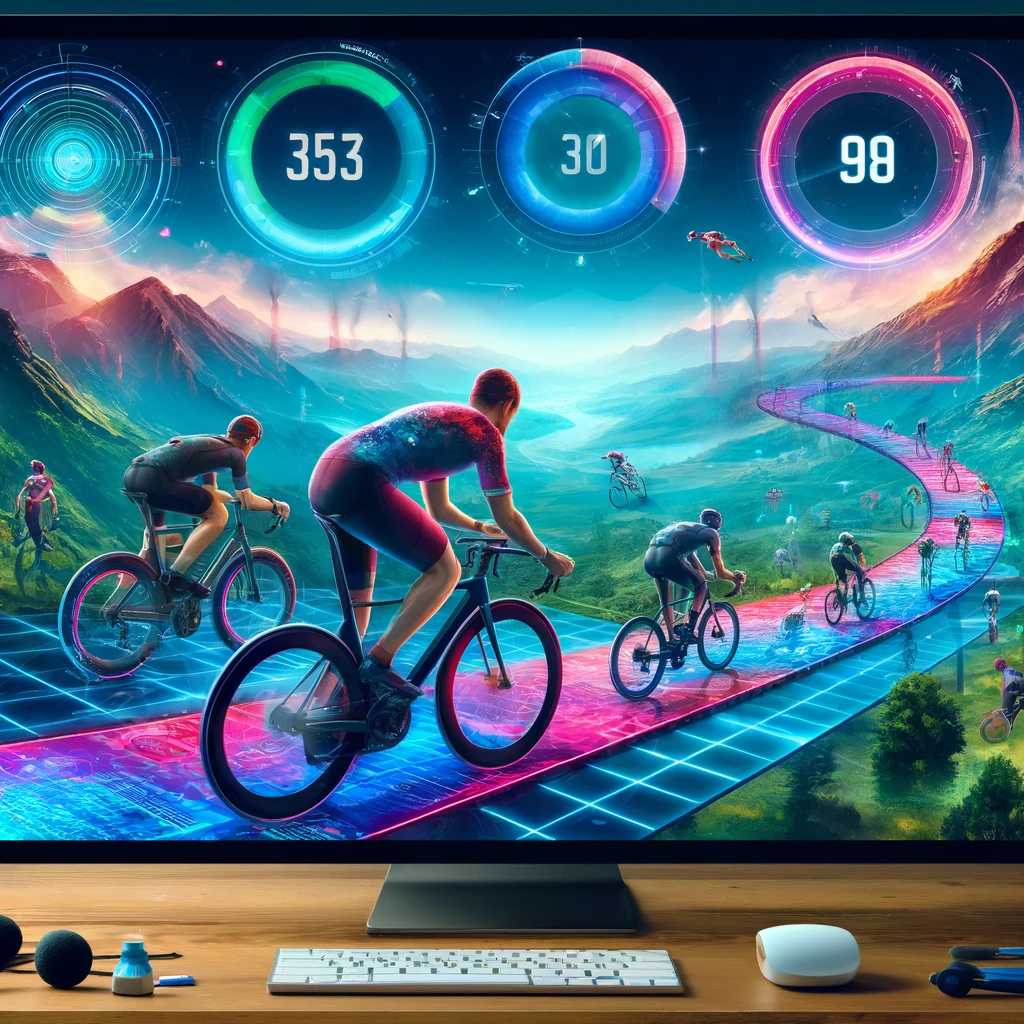
Augmented Reality Cycling: Revolutionizing Indoor Training
Augmented reality (AR) cycling transforms how cyclists train indoors, merging the physical challenge of cycling with virtual environments to create a dynamic and immersive experience. As fitness enthusiasts seek innovative ways to stay engaged while training indoors, platforms like Zwift, Bkool, and Rouvy have risen to prominence. These platforms simulate outdoor cycling experiences and add competition and social interaction elements often missing in traditional indoor cycling setups.
The Rise of AR Cycling Platforms
Zwift has become synonymous with indoor cycling adventures, offering cyclists and triathletes the chance to explore virtual worlds while participating in group rides, races, and structured workouts. What sets Zwift apart is its robust virtual environments and community-driven approach, allowing users to engage with fellow cyclists around the globe. However, the costs associated with Zwift, including monthly subscriptions and initial setup, can be a consideration for potential users.
Rouvy, another significant player, offers a different approach using real-world videos and routes that give cyclists the feel of riding outdoors. When considering Rouvy vs Zwift, many users appreciate Rouvy’s realistic graphics and the ability to ride actual race courses virtually. This realism helps cyclists who want specific route training or wish to visualize real roads during their workouts.
Bkool provides:
- Another alternative.
- Emphasizing varied cycling experiences with realistic weather conditions.
- Resistance adjustment corresponding to the virtual terrain.
- A wide selection of routes.
Bkool’s technology focuses on creating a highly realistic and interactive training environment.
Benefits of Augmented Reality Cycling
- Enhanced Engagement: AR cycling platforms like Zwift, Rouvy, and Bkool keep users engaged through visually appealing and mentally stimulating environments. That is crucial during long indoor training sessions where mental fatigue accompanies physical exhaustion.
- Community and Competition: These platforms offer a social dimension to training. Cyclists can join rides with friends, compete in races, or participate in global events, providing motivation and a competitive edge often lacking in solo indoor rides.
- Training Versatility: With features allowing users to adjust training intensity based on the virtual terrain and the ability to follow structured workout programs, AR cycling offers a versatile training tool. Cyclists can simulate different road conditions and gradients, which is invaluable for training for specific races or terrains.
- Accessibility and Convenience: Indoor cycling with AR allows cyclists to train at any time, regardless of weather conditions. This accessibility makes it easier to fit training into a busy schedule.
Zwift Alternatives
While Zwift is a popular choice, platforms like Rouvy and Bkool provide viable alternatives, each with unique features that cater to different preferences and training needs. When evaluating Zwift vs Rouvy or exploring other Zwift alternatives, it’s essential to consider factors such as the realism of the ride experience, available routes, community size, and cost.
Conclusion
Augmented reality cycling platforms are reshaping indoor training, making it more engaging, interactive, and beneficial. Whether you choose Zwift, Rouvy, Bkool, or another system, the key to maximizing indoor training is leveraging these advanced technologies to stay motivated, connected, and physically challenged. As AR technology continues to evolve, the future of indoor cycling looks promising, with more realistic experiences and innovative features on the horizon.



